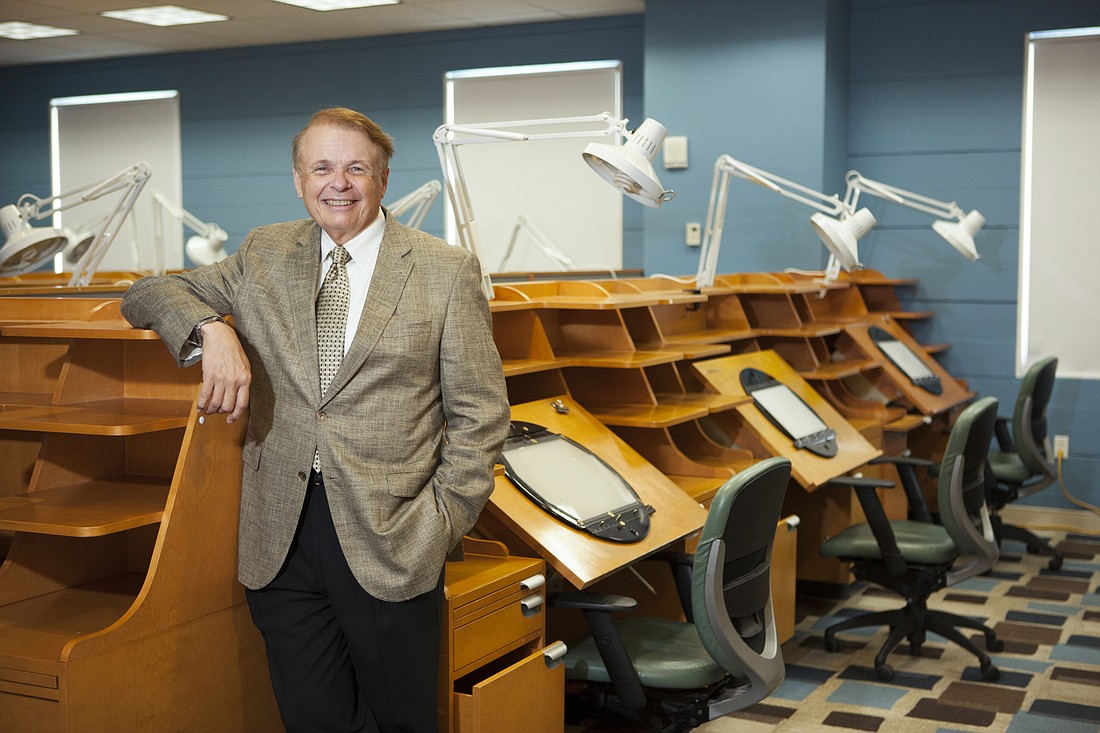- July 26, 2024
-
-
Loading

Loading

The business of higher education faces a coronavirus reckoning similar to Corporate America. In the corporate world, big businesses, from Walmart and Publix to Amazon and Google, have the financial wherewithal to withstand a prolonged crisis in ways small companies usually can’t match.
Colleges and universities, likewise, have a big divide. On the one hand are behemoths like the University of Florida or, in a nationally noted example Harvard, which has already dipped into its $41 billion endowment to cover coronavirus-induced costs. Smaller colleges don’t have that kind of cushion. And that gives administrators Grade A levels of anxiety.
“The college has never run at a deficit,” says Ringling College of Art and Design President Larry Thompson, of the Sarasota-based, nationally recognized arts college. “This will really test us.”
That test comes from the great unknown: How many students will there be to pay the tuition that fuels colleges’ operating budgets? “Most schools are dealing with huge enrollment uncertainty,” New College President Donal O’Shea says, and that includes the liberal arts honor school he overseas in Sarasota, part of the state university system. “Many students are asking: 'Do I return? Do I not return? Do I take a year off?'"
An underlying leadership challenge college presidents are dealing with is the list of people they answer to is large, including faculty, students, parents, staff and the community. “I’ve been through a lot of crisis is in my lifetime,” says Thompson, who prior to coming to Ringling 20 years ago was CEO of the Rock & Roll Hall of Fame in Cleveland. “This definitely is the biggest one I’ve ever had.”
O’Shea, likewise, says the ramifications of the pandemic have been the most complicated and challenging of his career.
In mid-March, both colleges moved everything they do in person to an online platform. Ringling extended spring break by a week, so professors and staff could train and prepare. Thompson cites Ringling’s IT department in particular for what he says was a remarkable job readying students for online learning. Some students, in animation and other classes, have access to what Thompson calls the Ferraris of desktop computers, and IT personnel had to figure out how to make that work remotely. “Arts isn’t the easiest thing to move online,” Thompson says. “Our teams had to be very, very creative.”
Getting through spring was one thing — now colleges have to figure out the next academic year, which normally begins in late August. At Ringling, the start date has been delayed from Aug. 24 to Sept. 7. New College is planning to shrink its semester the other way, shortening fall break from a week to a day and ending in-person classes after Thanksgiving.
Planning for the next semester at Ringling began several weeks ago, when the leadership team broke into six different task force groups, for dining halls, residence heath and safety and more. Although that worked on paper, Thompson soon realized things were going in quicksand. “There were so many sub-issues these groups were dealing with, and they dug so many rabbit holes, and then that led to more tunnels, and the more you dig the more problems you have,” he says.
So Thompson, in a leadership lesson he relearned in the crisis, refocused the groups. “I told them let’s set a goal: Get back to campus full time in fall, and everything else will be around that goal,” Thompson says. “That allowed us to not address and identify problems, but identify solutions. In times of chaos, you have to focus on what your primary mission is.”
The X-factor in all the planning goes back to the core question of what student enrollment will be when the semesters actually start. An arts and graphic design school like Ringling has always been a face-to-face learning environment, Thompson says. And O’Shea says at least 75% of New College students prefer face-to-face learning.
‘Arts isn’t the easiest thing to move online. Our teams had to be very, very creative.’ Larry Thompson, Ringling College of Art and Design
Thompson, for one, has been pleasantly surprised Ringling enrollment levels have stayed the same, and might even grow slightly, from 1,660 students last year to 1,700. But he simultaneously worries that between virus fears and the economy — parents having less money to pay for college — enrollment “can change in a nanosecond.”
A specific enrollment worry is in international students. That segment has grown from 6% of the total student population to closer to 20% in recent years. But many of those students are from China and South Korea, Thompson says, and will likely have student visa issues to get back to campus.